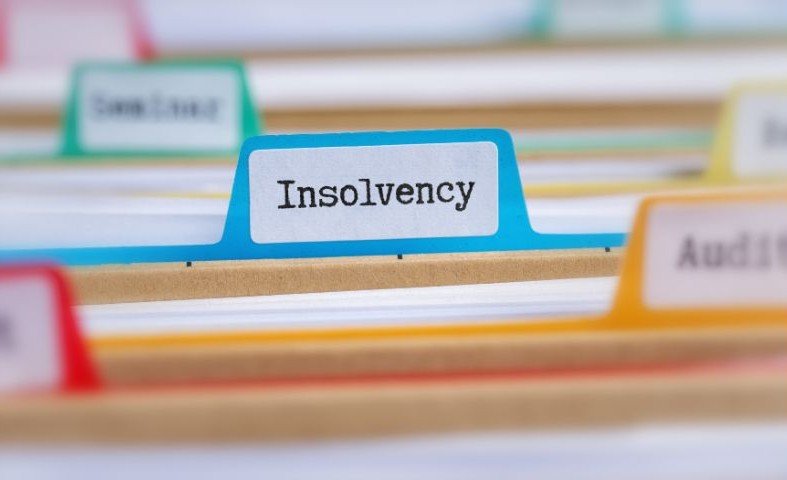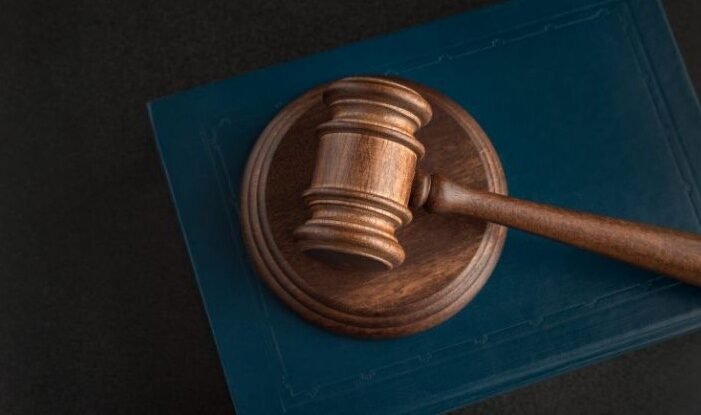Home / IP Battles in the Life of a Showgirl
IP Battles in the Life of a Showgirl
- November 11, 2025
- Ilana Baruah
Taylor Swift taught us all: better call a lawyer before you sign on the dotted line, or you’ll be left singing ‘Look What You Made Me Do’.
As Taylor steps into her Showgirl era, buying back her original albums and rewriting the rules, this article dives into how she brought a knife to a gunfight… and still stole the show.
In 2005, at the very outset of her music career, a 15-year-old Taylor entered into a contract with Big Machine Records (BMR) under which she recorded several singles and six albums. The contract the 15-year-old Taylor entered into required her to assign her master recording rights “in perpetuity” to BMR, effectively vesting ownership of the original sound recordings with the label for an unlimited duration.
There are two different copyrights for musical works in the US. The first is for the musical work itself, which constitutes the underlying composition, and the second persists in the master, which is the final recorded version. The U.S. Copyright Act of 1976 states that, in terms of sound recording, the owner has the right to duplicate the sound recording in the form of “phonorecords or copies that directly or indirectly recapture the actual sounds fixed in the recording.”[1] However, the clause is silent on new recordings that independently recreate the same musical work.[2] For example, the direct sampling of an original sound recording constitutes infringement, but creating a new recording or re-performance of the same music does not.
Upon expiry of the contract, Taylor chose not to renew the agreement. Consequently, in 2019, record executive Scooter Braun acquired Big Machine Records, thereby owning the rights to Taylor’s original master recordings. Taylor was offered the opportunity to repurchase her albums upon signing a non-disclosure agreement, which she declined. As a result, she no longer retained any rights to her original masters. In 2020, the albums were subsequently sold again to Shamrock Holdings.
Re-recording was also restricted by the “re-recording clause,” which prevented her from re-recording her album for six years after the release of her masters. As the original music composition and the recorded version have separate rights, record labels customarily impose contractual restrictions on re-recording to safeguard the value of the sound recording rights they hold and to protect the investments they make in the development and promotion of the artist.
Therefore, upon the expiry of six years, Taylor took a bold decision to re-record four of her albums — Fearless, Speak Now, 1989, and Red — which led to the introduction of Taylor’s versions.
In an interview, Taylor said that “when something says in parentheses Taylor’s Version next to it, that means I own it.”[3]
This move considerably shifted the paradigm of contracts for copyright composition in musical works. Pursuant to the re-recording, the release of Taylor’s versions achieved significant commercial success, thereby diminishing the market demand and commercial value of the original master recordings.
Before Taylor, many artists like Bob Dylan, Prince, Def Leppard and JoJo[4] have all re-recorded in response to the well-publicised disputes with their record labels; however, by releasing Taylor’s versions, “she did more than delight a nation of Swifties. She also opened significant questions about the role of intellectual property in contract law, and possibly tipped the balance toward artists.”[5]
Consequently, on May 30, 2025, Taylor announced through her official website that she had acquired the masters of her first six albums, together with the associated videos, concert films, artwork, photography, unreleased content, and other related materials, pursuant to an offer extended by Shamrock on terms more favourable to her. She attributed the sale’s success to the positive reception of her re-recordings and the Eras Tour.[6]
The U.S. Copyright Act of 1976 also provides reversion mechanisms under Sections 203 and 304,[7] which allow creators to terminate copyright grants after a substantial period of time. These provisions enable authors to reclaim rights to works that were previously assigned or licensed. However, a major drawback is that this right typically becomes exercisable only after 35 years, resulting in a lengthy, often impractical waiting period for many creators.[8]
Legal Framework Analysis: India
Although India has not had a “Taylor Swift moment” to spotlight this issue, it has certainly witnessed several disputes over sound recordings, their underlying works, and associated rights. While record labels often leverage their bargaining power to secure copyright assignments and compel artists to relinquish their rights in India, some safeguards protect artists against such exploitation.
Earlier, a Supreme Court decision in IPRS v. Eastern Indian Motion Pictures Association[9] restricted authors’ rights to the underlying works of a cinematograph film or to rights under an employment contract. In essence, the producer of the cinematograph film or sound recording acquires the copyright over the incorporated work, preventing the original author from claiming further rights or royalties when the film is publicly communicated.
This interpretation drew significant criticism for undermining the rights of composers and lyricists. Justice J Krishna Iyer, in his obiter dicta, stated that the music, which has merged through the soundtrack into the motion picture, is copyrighted by the producer. Still, on account of this monopoly, the music composer’s copyright does not perish. The twin rights can co-exist, each fulfilling itself in its delectable distinctiveness. It was further stated that authors of original works, including lyricists and music composers, often suffered on account of unequal bargaining power vis-à-vis the producers of cinematograph films and/or sound recordings.
To address these concerns, the Copyright (Amendment) Act, 2012,[10] introduced a proviso to Section 17, bringing about a crucial change. The proviso stated that the author of an original literary, dramatic, or musical work retains their rights in the underlying work, even where the employer owns the film or the work is created under a contract of employment.[11]
This position was reaffirmed in IPRS v. Rajasthan Patrika Pvt. Ltd.[12], where the Court held that the rights of authors of original compositions remain unaffected by the employer’s ownership of the film or any other work.
The decision inferred that the rights of both the owner and the author are independently protected. Likewise, in the context of sound recordings, both the sound recording rights and the composition rights relating to the underlying works continue to enjoy independent protection and the ability to claim royalties. However, the scope of re-recording rights in India remains uncertain and is primarily governed by the terms of contractual agreements entered into between the parties.
The Amendment Act also introduced the performer’s right under Section 38 of the Act, which states that any performer who appears or engages in any performance shall have a special right to be known as the “performer’s right” in relation to such performance. The performer’s right shall subsist for fifty years from the beginning of the calendar year next following the year in which the performance is made.[13] It confers on the performer the right of reproduction of the performance in any material form, including storing it in any medium by electronic means.
In addition to the above, artists in India are also conferred the moral right under Section 57 of the Act. Moral rights are personal to the author/creator and utterly independent of the author’s economic rights.
Moral rights comprise two major rights: paternity (or attribution) and integrity. The right of paternity allows the author to claim authorship of a work, even after the copyright has been transferred. For instance, Javed Akhtar sent a legal notice to Armaan and Amaal Mallik stating the reprised version of “ghar se nikalte hi” had infringed his right of integrity, i.e. the right to prevent his work from being mutilated and distorted in a way that is prejudicial to his honour and reputation. He objected that the new version credited only Kunaal Verma as the lyricist, even though Akhtar wrote the original lyrics.[14]
Moral rights depart from the conventional understanding that artists are divested of all rights once their economic rights are assigned to a publisher or any other person. Rather identifies the author’s special rights to claim authorship of the work, right to restrain or claim damages on any distortion, mutilation, or other modifications.
Even though record labels often exploit artists by compelling them to accept one-sided assignment terms, in India, the assignee cannot claim immunities inconsistent with Section 57 of the Act.[15] It reinforces the author’s superior rights and their entitlement to oppose any alteration of their work.
Final Thoughts
After analysing this Delicate situation, although a legal loophole in the U.S. allows artists to re-record their music, a more defensive approach may be necessary in the Indian context. Until a concrete law or judicial precedent emerges to address this issue directly, artists in India may need to rely on and exercise their existing rights, such as moral and performance rights, to protect their interests.
However, what’s better than revenge is Fearless moves like getting the contract Clean-ly vetted and conducting due diligence that’s All Too Well. After all, You Belong with a solid plan, not chaos!
References:
[1] 17 USC 114 – Copyright law of the United States (title 17) and Related Laws Contained in Title 17 of the United States Code, Copyright Law of the United States | U.S. Copyright Office. Available at: https://www.copyright.gov/title17/.
[2] Bad blood© with Taylor Swift’s album re-recording (2021) Harvard Journal of Law & Technology. Available at: https://jolt.law.harvard.edu/digest/bad-blood-with-taylor-swifts-album-re-recording.
[3] Myers, S. (2021) Taylor Swift Explains Why She’s Re-Recording Her Albums. Available at: https://www.youtube.com/watch?v=pB1nyP_O7II
[4] Allison Rapp, Take Two: Artists Who Re-Recorded Their Music, (Sept. 28, 2023), https://ultimateclassicrock.com/artist-re-recorded-music/.
[5] Brett Milano, How Taylor Swift changed the copyright game by remaking her own music, Harvard Law School (Apr. 2, 2024), https://hls.harvard.edu/today/how-taylor-swift-changed-the-copyright-game-by-remaking-her-own-music/.
[6] https://www.taylorswift.com/read-my-letter/
[7] 17 USC §§ 203, 304(c U.S. Copyright Office, Notice of Termination, U.S. Copyright Office https://www.copyright.gov/recordation/termination.html.
[8] Yuvaraj, Joshua, ‘It’s Me, Hi, I’m The Problem, It’s Me’: Re-Recording as an Alternative to Statutory Copyright Reversion (November 29, 2024). The University of Auckland Faculty of Law Research Paper Series 2024, Journal of Intellectual Property Law and Practice, Volume 19, Issue 12, 2024[10.1093/jiplp/jpae091], Available at: https://academic.oup.com/jiplp/article/19/12/884/7913103
[9] IPRS v. Eastern Indian Motion Pictures Association (https://indiankanoon.org/doc/243280/ )
[10] Sec. 17 Copyright Amendment Act, https://copyright.gov.in/Documents/Notification/Copyright_Amendment_2012.pdf.
[11] Ibid.
[12] Indian Performing Right Society Limited v. Rajasthan Patrika Pvt. Ltd. Accessible here.
[13] Sec 38 of Indian Copyright Act (https://www.indiacode.nic.in/show-data?abv=CEN&statehandle=123456789/1362&actid=AC_CEN_9_30_00006_195714_1517807321712§ionId=14552§ionno=38&orderno=50&orgactid=AC_CEN_9_30_00006_195714_1517807321712)
[14] Javed Akhtar Issues Legal Notice To Armaan & Amaal Malik, (https://www.masala.com/bollywood-news/javed-akhtar-furious-with-ghar-se-nikalte-hi-sends-legal-notice-to-t-series-and-malik-brothers)
[15] Mannu Bhandari v. Kala Vikas Pictures Pvt. Ltd. And Anr. (https://indiankanoon.org/docfragment/331111/?big=3&formInput=bhandari )
Image Credits:
Photo by omid armin on Unsplash
There are two different copyrights for musical works in the US. The first is for the musical work itself, which constitutes the underlying composition, and the second persists in the master, which is the final recorded version. The U.S. Copyright Act of 1976 states that, in terms of sound recording, the owner has the right to duplicate the sound recording in the form of “phonorecords or copies that directly or indirectly recapture the actual sounds fixed in the recording.”[1] However, the clause is silent on new recordings that independently recreate the same musical work.[2] For example, the direct sampling of an original sound recording constitutes infringement, but creating a new recording or re-performance of the same music does not.
Related Posts

IP Battles in the Life of a Showgirl

The End of Going Concern Sales: New Amendments Explained

SEBI’s Powers in Focus: Insights From the First Overseas Capital Order

